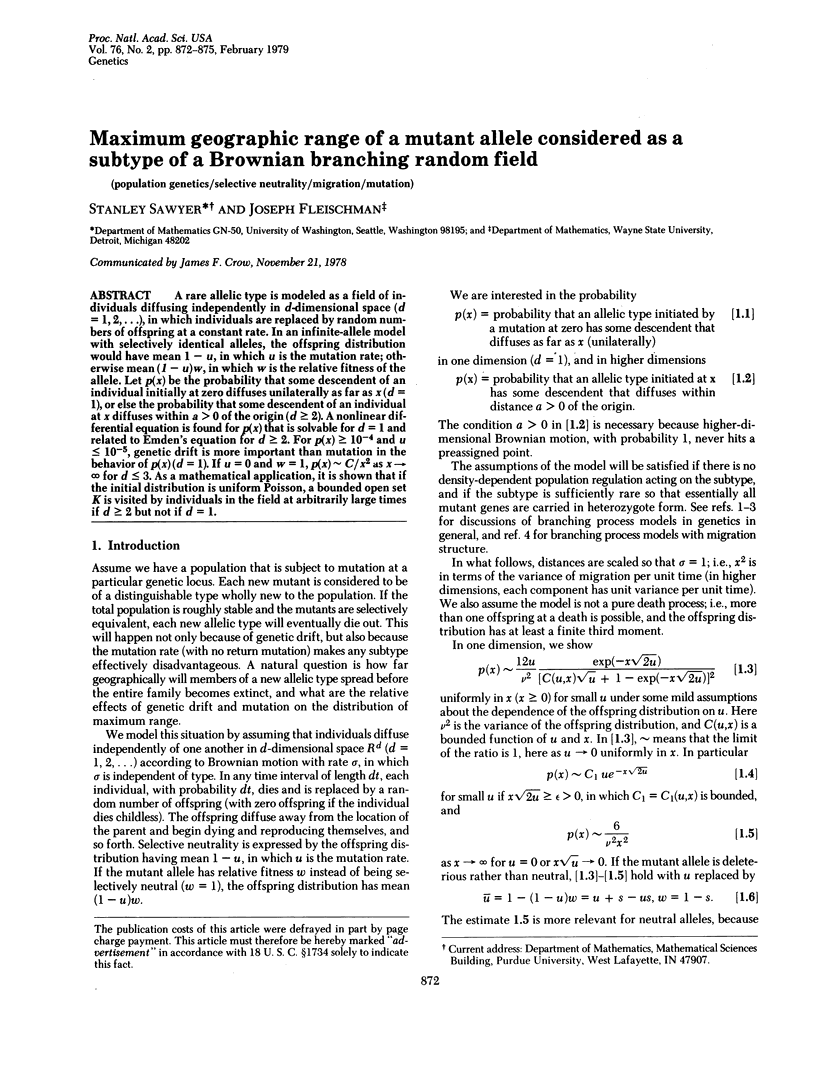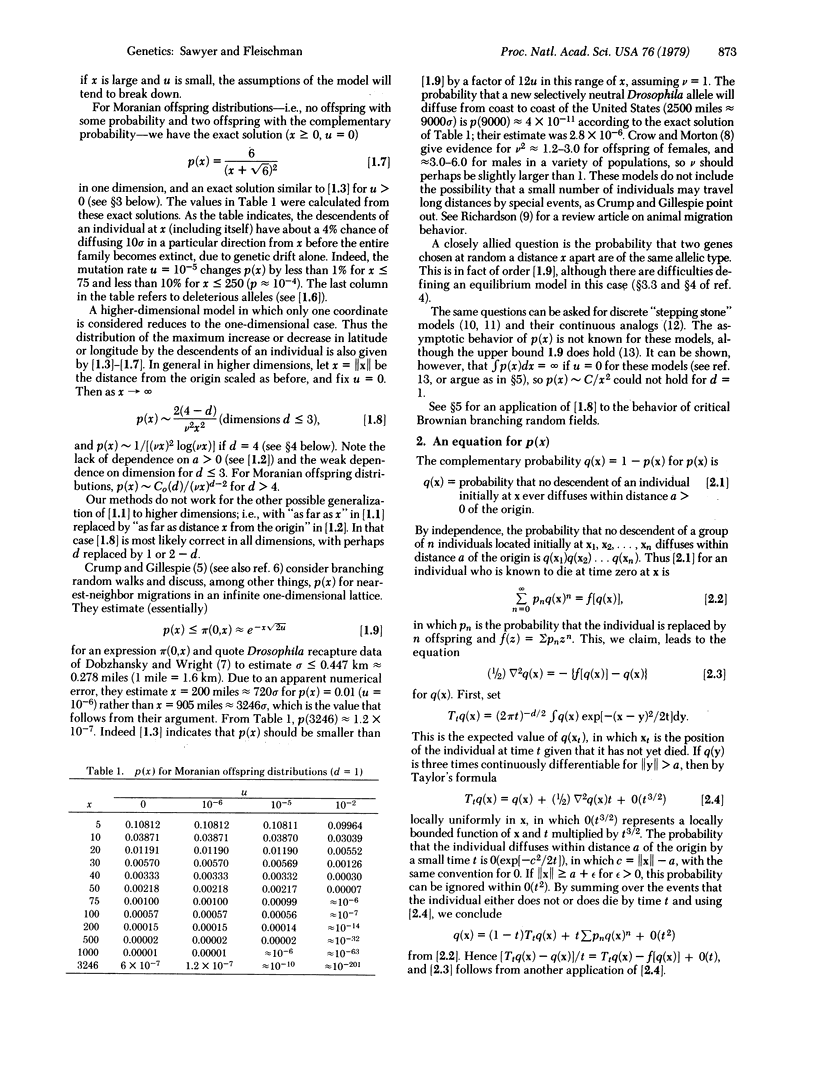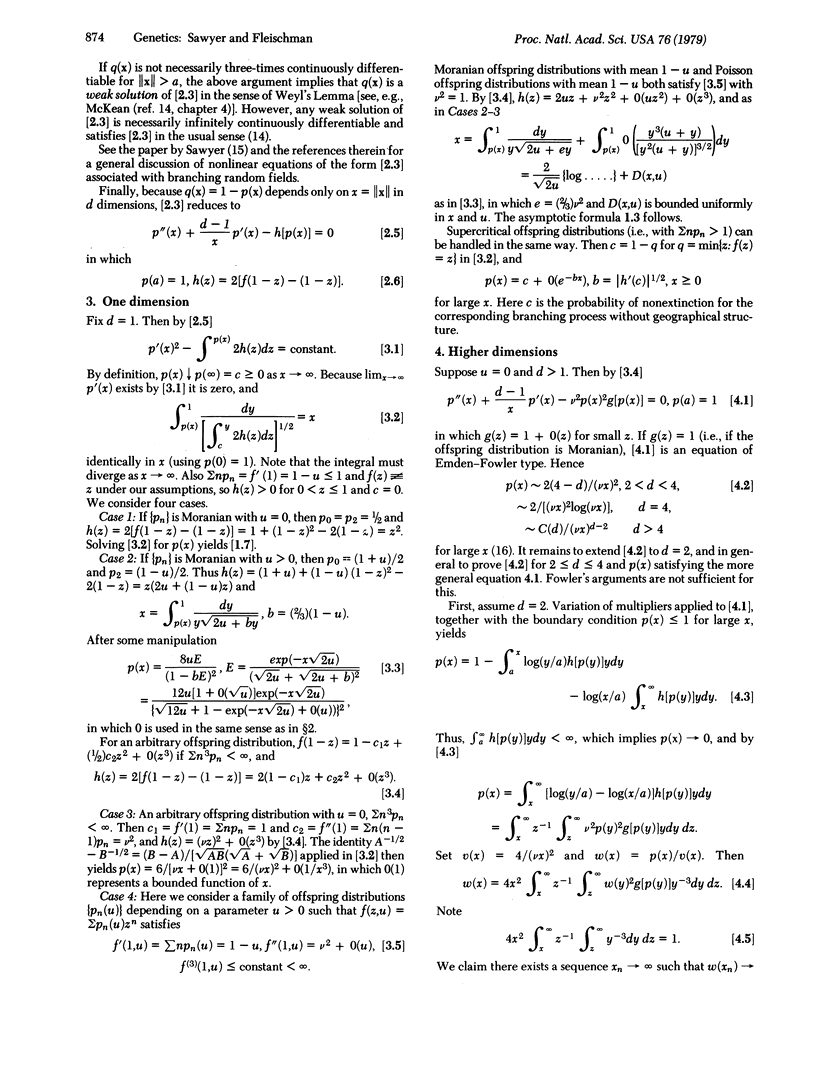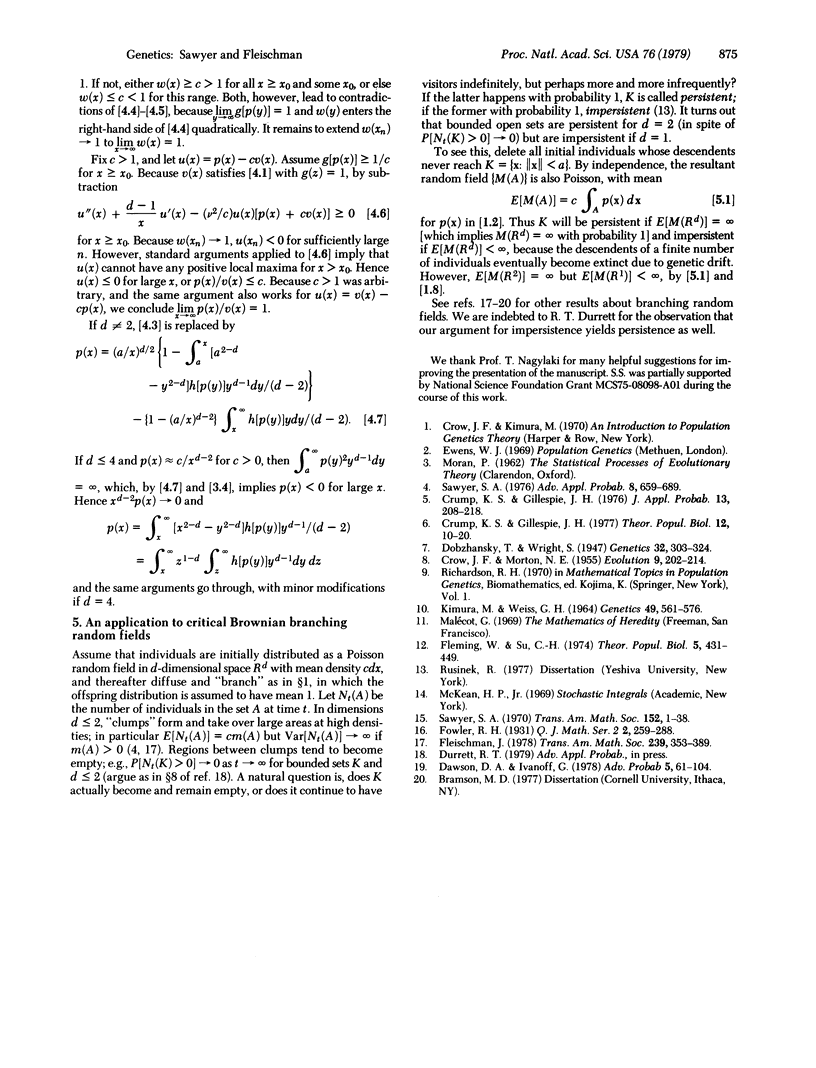Abstract
A rare allelic type is modeled as a field of individuals diffusing independently in d-dimensional space (d = 1,2,...), in which individuals are replaced by random numbers of offspring at a constant rate. In an infinite-allele model with selectively identical alleles, the offspring distribution would have mean 1 — u, in which u is the mutation rate; otherwise mean (1 — u)w, in which w is the relative fitness of the allele. Let p(x) be the probability that some descendent of an individual initially at zero diffuses unilaterally as far as x(d = 1), or else the probability that some descendent of an individual at x diffuses within a > 0 of the origin (d ≥ 2). A nonlinear differential equation is found for p(x) that is solvable for d = 1 and related to Emden's equation for d ≥ 2. For p(x) ≥ 10-4 and u ≤ 10-5, genetic drift is more important than mutation in the behavior of p(x) (d = 1). If u = 0 and w = 1, p(x) ∼ C/x2 as x → ∞ for d ≤ 3. As a mathematical application, it is shown that if the initial distribution is uniform Poisson, a bounded open set K is visited by individuals in the field at arbitrarily large times if d ≥ 2 but not if d = 1.
Keywords: population genetics, selective neutrality, migration, mutation
Full text
PDF



Selected References
These references are in PubMed. This may not be the complete list of references from this article.
- Crump K. S., Gillespie J. H. Geographical distribution of a neutral allele considered as a branching process. Theor Popul Biol. 1977 Aug;12(1):10–20. doi: 10.1016/0040-5809(77)90032-6. [DOI] [PubMed] [Google Scholar]
- Fleming W. H., Su C. H. Some one-dimensional migration models in population genetics theory. Theor Popul Biol. 1974 Jun;5(3):431–449. doi: 10.1016/0040-5809(74)90062-8. [DOI] [PubMed] [Google Scholar]
- Kimura M, Weiss G H. The Stepping Stone Model of Population Structure and the Decrease of Genetic Correlation with Distance. Genetics. 1964 Apr;49(4):561–576. doi: 10.1093/genetics/49.4.561. [DOI] [PMC free article] [PubMed] [Google Scholar]


